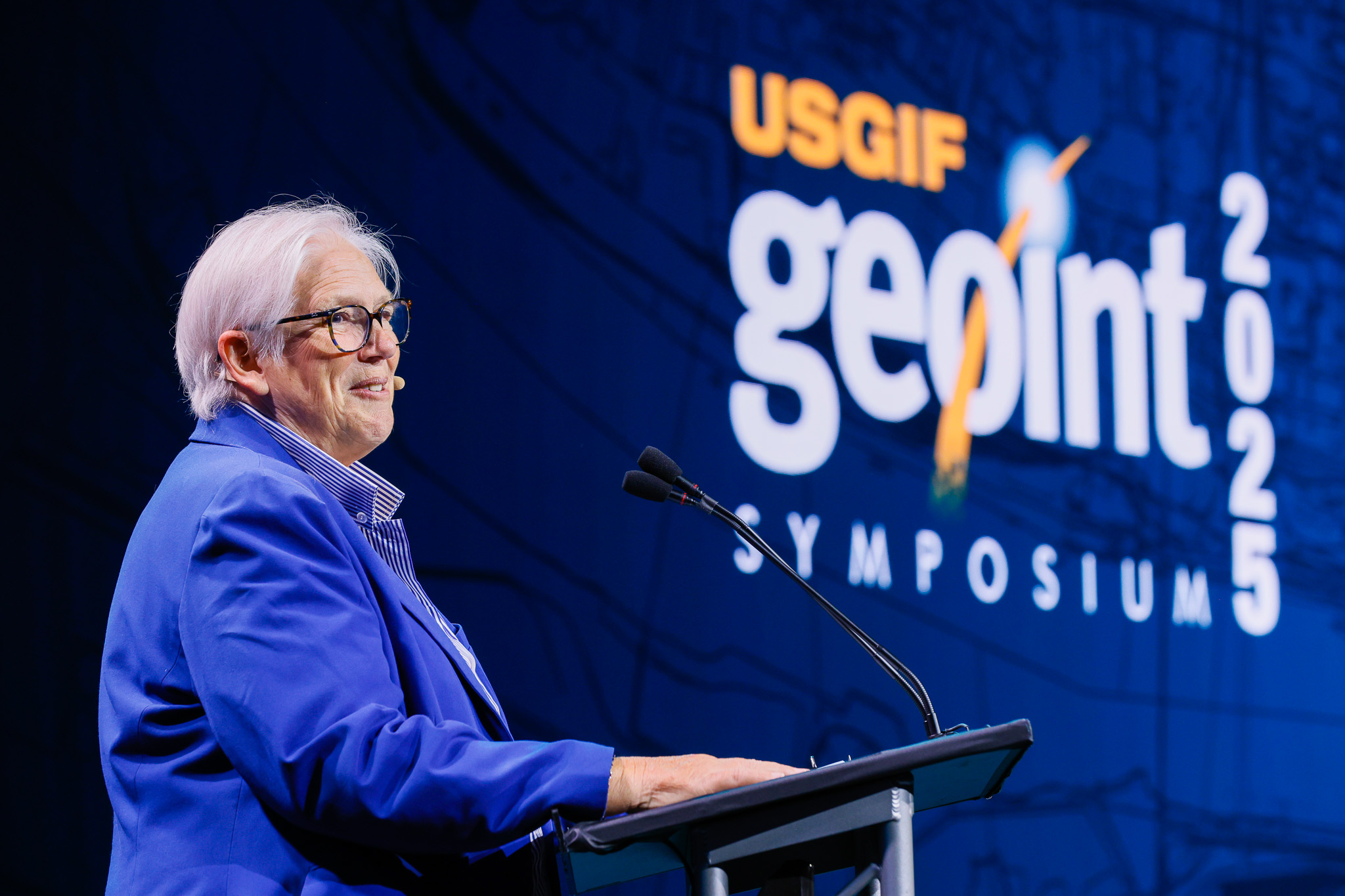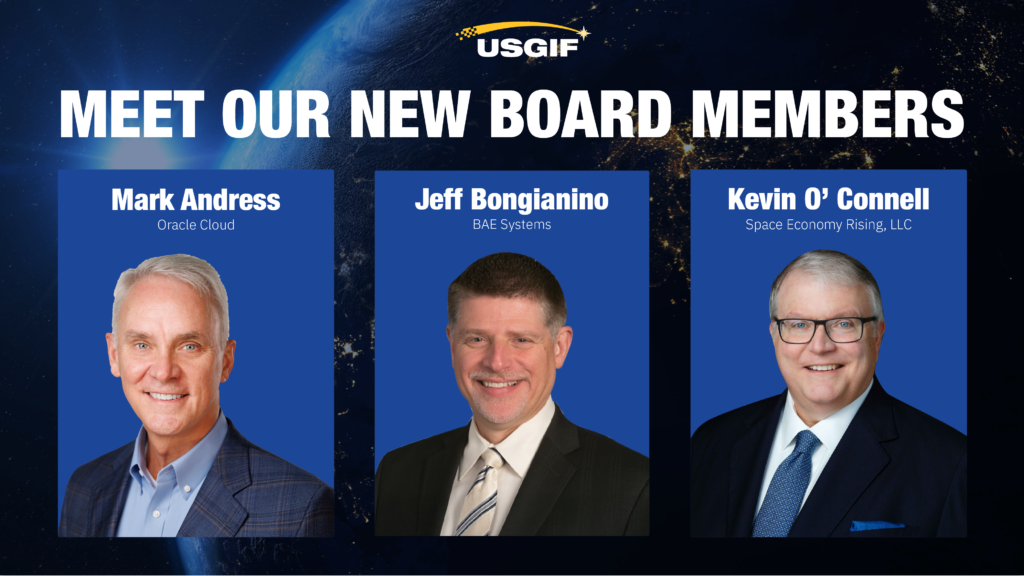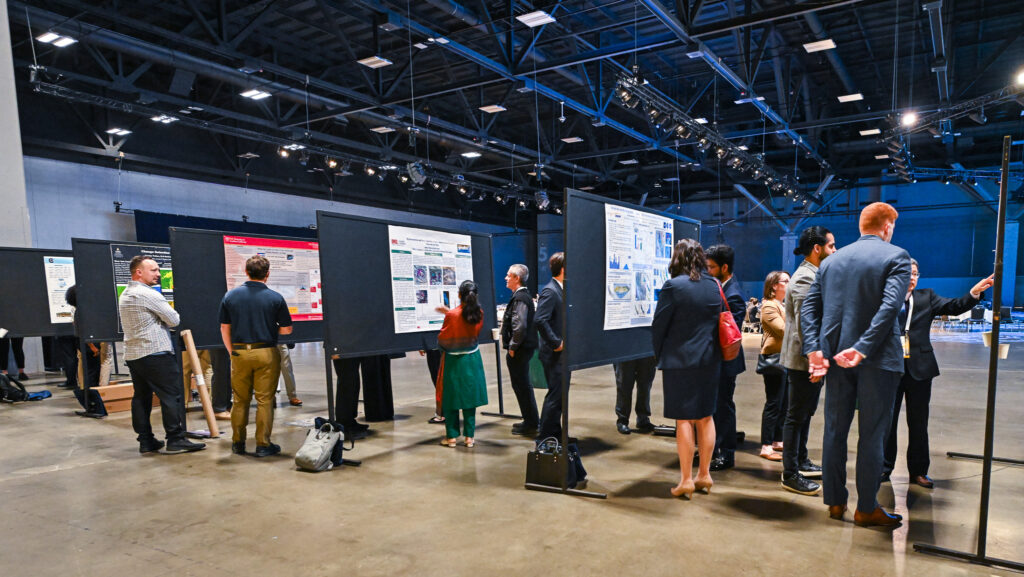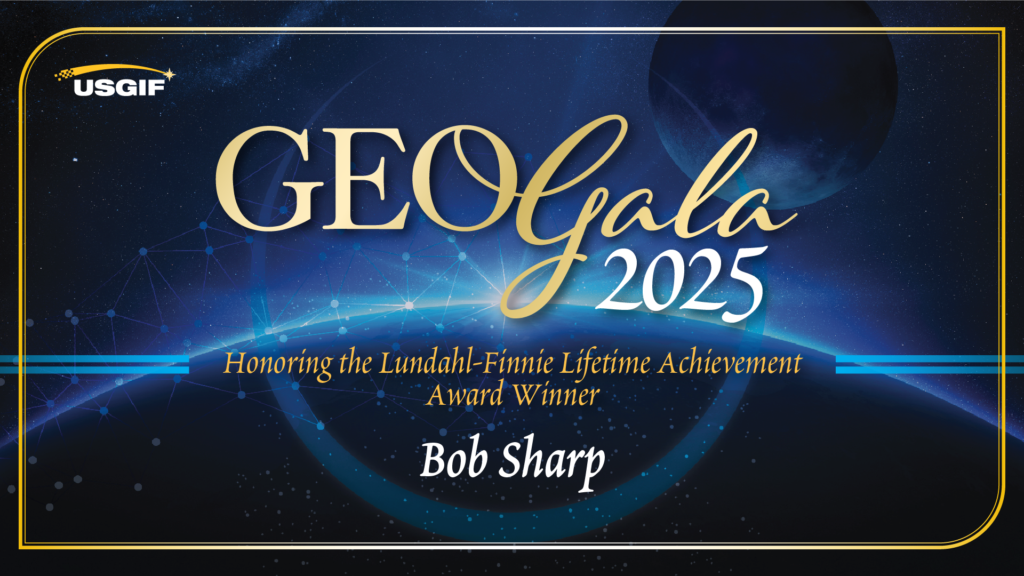GEOINT’s Next Frontier: Space Collaboration and Strategic Alignment
The final general session day of the 2025 GEOINT Symposium highlighted the challenges and opportunities in geospatial intelligence. Speakers focused on the critical need for collaboration across agencies, the evolving role of GEOINT in national and global security, and the announcement of an important agreement that will further strengthen interagency partnerships.
Serving as Master of Ceremonies for the day was The Honorable Sue Gordon, former Principal Deputy Director of National Intelligence and now president of GordonVentures, LLC. She opened by emphasizing the central role of GEOINT. It’s no longer the “little INT,” Gordon noted, but an essential driver of security.
“Everyone knows that command of geospatial intelligence — the ability to put anything in the context of space and time — makes situational awareness and common operating picture possible and operational performance at speed available,” she said. “From the sea floor to the heavens, we can imagine — and mostly deliver — the spatial awareness that can support all manner of human activity and allow for national and global security advantage.”
While pointing to significant recent advances in GEOINT’s capabilities, Gordon also reminded the audience there’s more to be done to meet future challenges, including rising threats from China, Russia, and an unsettled Middle East. “My teammates,” she said, “this is a time of profound challenge geopolitically and resplendent opportunity technologically.”
Gordon challenged the audience to adopt the ethos of intelligence officers, embrace change, and take bold action in addressing future needs. “You all have space,” she said. “You all have domain. Use it. See what’s going on. Don’t merely do it like we’ve done it before. But do know that there are openings that you can take.”
Collaboration and Transformation in Space Operations
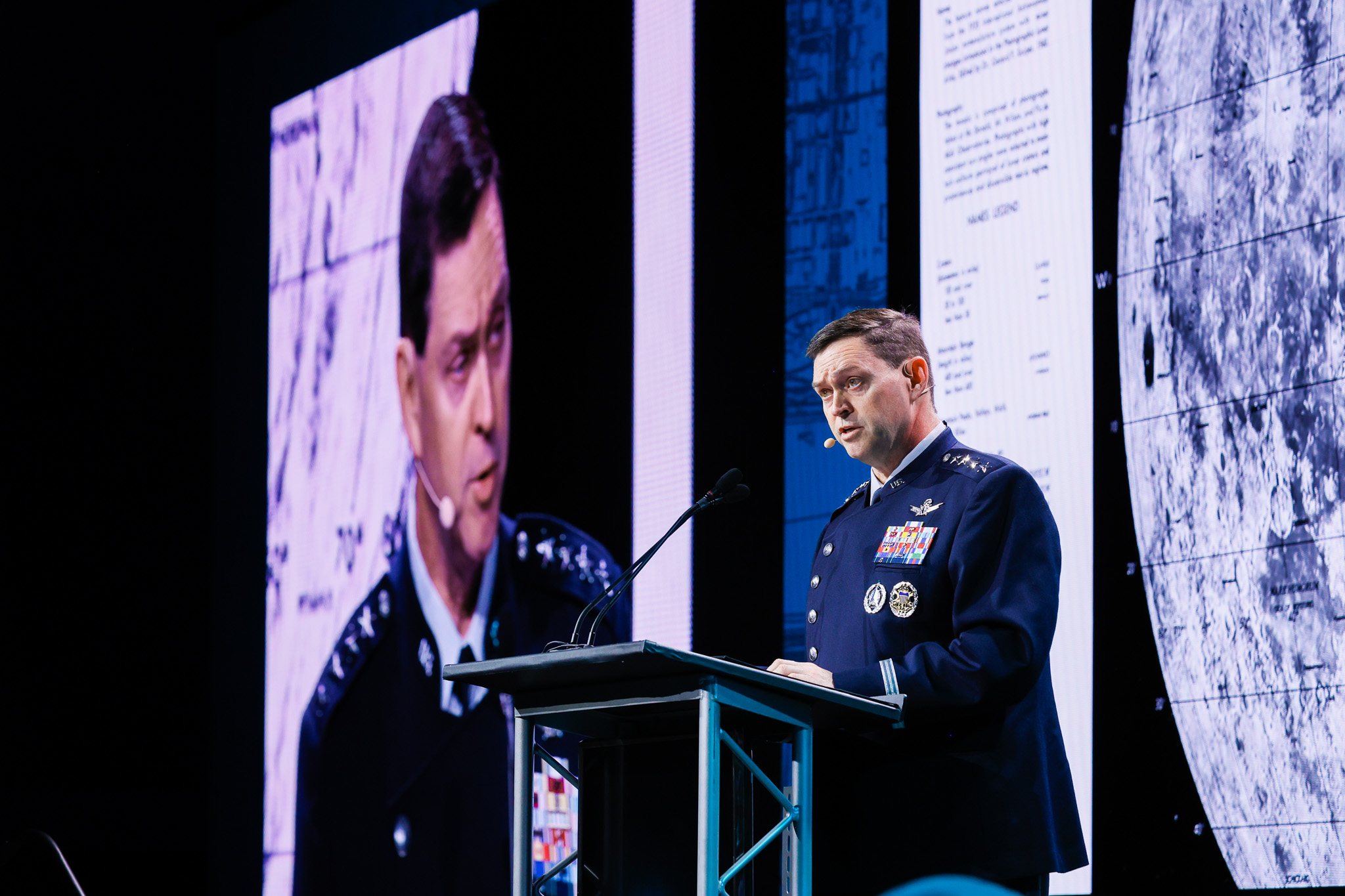
Opportunity and challenge amid rapid change were also central themes in the keynote speech delivered by General Chance Saltzman, Chief of Space Operations for the United States Space Force. General Salzman began by emphasizing the importance of collaboration between the Space Force, the National Geospatial-Intelligence Agency, and other agencies within the national security space domain.
He highlighted the Space Force’s ongoing transformation, stressing that “space superiority is the reason we exist as an organization, and it informs everything we do as a military service.” General Saltzman discussed the Space Force’s primary mission: to contest and control space, ensuring freedom of action for U.S. forces while denying adversaries the same capabilities. He also addressed the five-year-old service’s evolving role, noting the necessity of interagency cooperation to eliminate redundancies and maximize efficiency.
Saltzman said in a call for greater alignment across agencies,
“There’s great power in people from different organizations sitting side by side in pursuit of the same mission. When you break down the barriers between organizations, when you set aside tribalism, organizational orthodoxy, what you’re left with is a singular focus on mission and the creative solutions that focus inspires.”
General Saltzman urged the community to think beyond traditional boundaries, saying, “I think we can do better. We just have to think bigger. We need synergy, not redundancy. If we do things the way we always have, we’ll get the results we’ve always gotten. The security environment has changed, and we need to keep pace with it.”
During a fireside chat with Sue Gordon, General Saltzman announced that earlier in the morning at the Symposium, he and Vice Admiral Frank Whitworth, Director of the NGA signed a memorandum of agreement (MOA) between the Space Force and NGA on tactical surveillance, reconnaissance, and tracking. This agreement formalizes the roles and responsibilities of both organizations, reflecting deep collaboration at all levels. General Saltzman emphasized that the document represents the culmination of extensive teamwork, not just theoretical discussions, and sets the stage for ongoing partnership.
NGA’s Impact and Challenges in Space Security
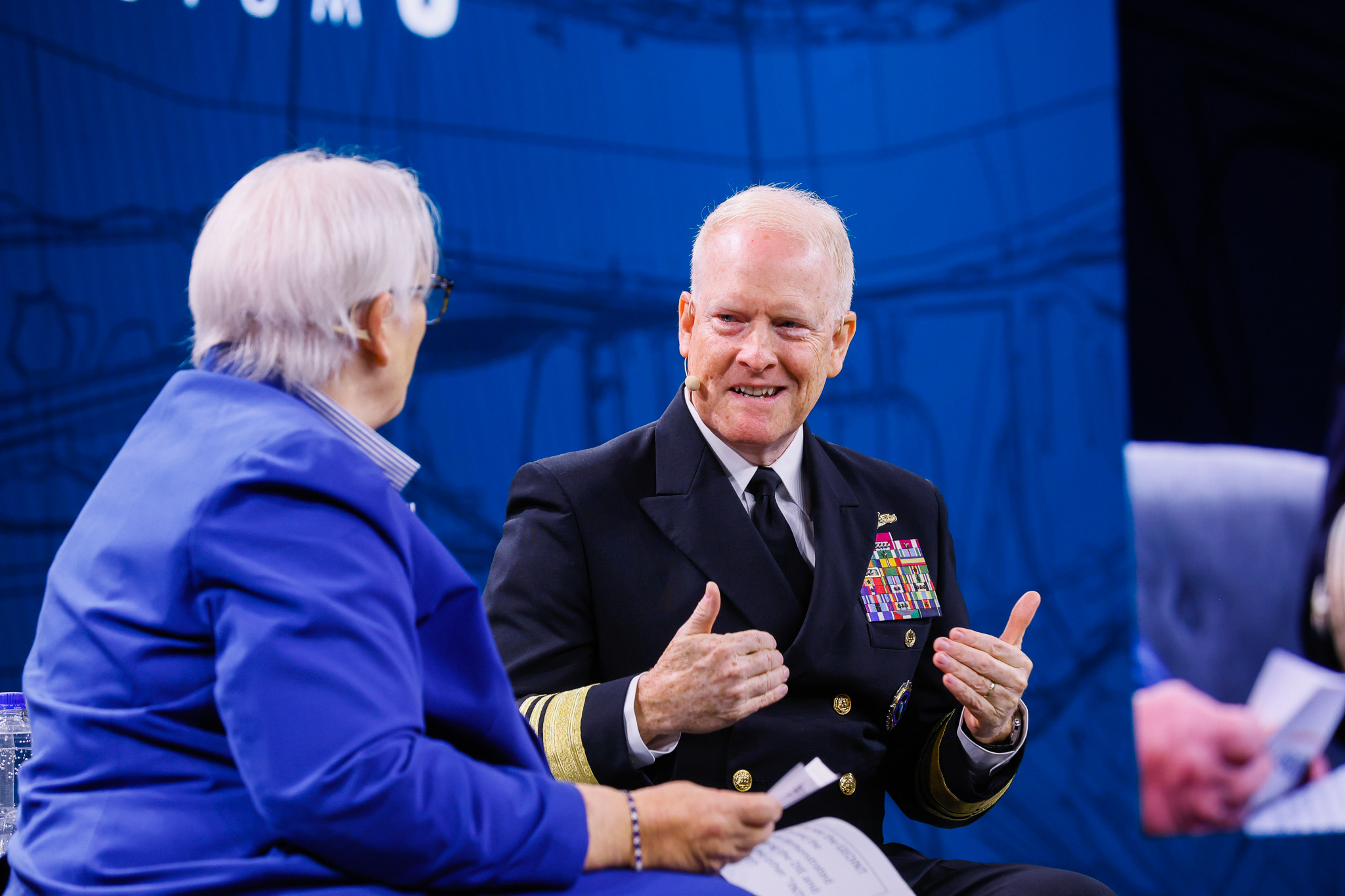
Vice Admiral Whitworth subsequently provided further details of the new memorandum of agreement in the Symposium’s concluding keynote speech, noting, “that MOA is more than a step in the right direction – it is foundational.”
“The space domain is vast and critical to our nation’s security,” Admiral Whitworth said. “NGA and Space Force have the right people, with the right skills working together to tackle current and emergent requirements.”
In a rousing and detailed speech, Admiral Whitworth highlighted several recent key NGA achievements, including tremendous growth in and demand for its analytical output, its leading-edge AI and machine learning initiatives, and its advancements in geospatial data processing.
“We are among the smaller agencies,” he conceded. “With no hesitation, I can say that pound for pound – dollar for dollar – NGA (and the GEOINT enterprise, by extension) punches way above our weight.”
And, as others had done throughout the Symposium, he noted in particular the security issues raised by rival nations. “China’s – and Russia’s – space activities have become increasingly concerning, with both countries deploying progressively capable systems aimed at direct competition with the U.S. and our space-based systems,” he said. “Both countries have deployed ground-based counterspace capabilities, including electronic warfare systems, directed energy weapons, and antisatellite missiles.”
Throughout his remarks, Admiral Whitworth took note of the significance of St. Louis in the advancement of geospatial intelligence, starting with the mapping capabilities of two locally based military facilities that helped chart the course for manned flights to the moon, and on through the impending opening of the new NGA West headquarters scheduled for this September. He wrapped with a call to action for the future of GEOINT, reflecting on the NGA’s legacy of discovery, a legacy echoing that of Charles Lindbergh’s historic transatlantic flight, ending 90 years ago to the day – in a plane called the Spirit of St. Louis.
Closing out and looking ahead
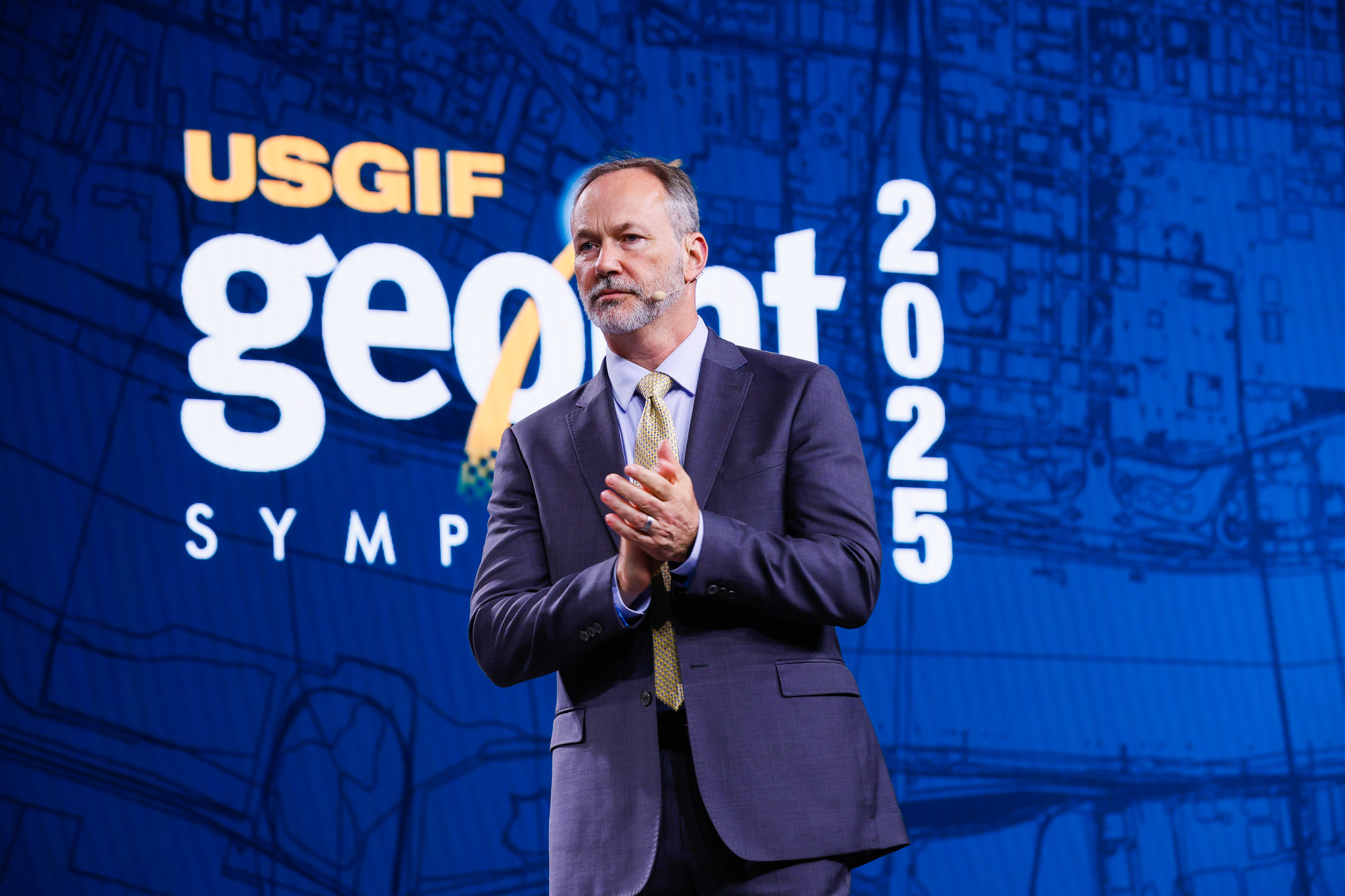
USGIF Executive Vice President Gary Dunow delivered the Symposium’s closing remarks.
“As we reflect on the insights and conversations shared over the past few days,” he began, “what strikes me most is the complexity of missions that our GEOINT community addresses and the incredible talent that is applied across those mission sets. It’s truly inspiring to see the work you are all doing every day.”
Dunow noted that, “this gathering is just one chapter in a much larger story that we’re writing together. There’s much to look forward to.”
He pointed to upcoming USGIF events this summer, the annual GEOGala in December, and the year-round activities of USGIF’s working groups as ways to remain involved in the community. And the next GEOINT Symposium will be held in May 2026 in Aurora, Colorado.
Related Articles
USGIF Welcomes Three New Board Members to Help Shape the Future of GEOINT
USGIF is proud to welcome three outstanding leaders to our Board of Directors: Mark Andress, Jeff Bongianino, and Kevin O’Connell. These individuals bring deep…
USGIF Celebrates 2025 GEOINT Symposium Student Poster Winners
USGIF proudly recognizes the outstanding achievements of the top three winners of the 2025 Student Poster Competition, selected from an exceptional field of uni…
USGIF Honors Vice Admiral Robert Sharp, USN (Ret.), with 2025 Lundahl-Finnie Lifetime Achievement Award
The United States Geospatial Intelligence Foundation (USGIF) is proud to announce Vice Admiral Robert “Bob” Sharp, USN (Ret.), as the recipient of the 2025 Arth…

